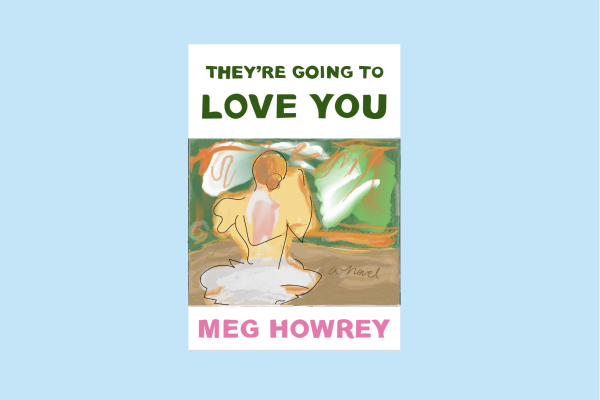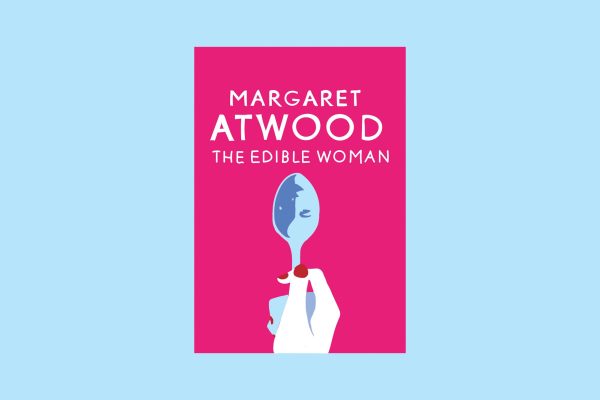“They’re Going to Love You” by Meg Howrey
— Alexa Donovan, Deputy Arts Editor

The night I began reading “They’re going to Love You” by Meg Howrey, I knew it would be one of my favorites. I was falling asleep when I first opened the book, and the next thing I knew I was nearly halfway through it.
Carlisle, a choreographer, is a child of the ’80s, born to two ballet prodigies, Robert and Isabel.
The book begins when James, Robert’s current partner, tells her that her estranged father is dying. Carlisle hasn’t spoken to her father in years, and the novel alternates between her present reconciliation with this news and stories from her childhood.
With James and Robert in their brownstone on Bank Street in Greenwich Village, a young Carlisle was exposed to the intellectual culture of New York City and was immersed in dance, literature and art. At the same time, the AIDS crisis was sweeping the nation, devastating the Greenwich Village community. Now, as she reminisces on her childhood and relationship with her dying father, she must decide if she will reconnect with the two men.
“They’re Going to Love You” is one of the best books I’ve ever read. I was lost in Carlisle’s world, surrounded by the well-developed characters, and every second of it was heartbreaking. Any book that elicits a visceral emotional response is bound to be beautiful. After finishing the novel, I have been unable to start another book because every word I read makes me miss this one.
“Hereafter: The Telling Life of Ellen O’Hara” by Vona Groarke
— Anna Baird-Hassell, Copy Chief

A story that seamlessly blends history and fiction, Vona Groarke’s “Hereafter” traces the life of the author’s great-grandmother — a woman she has only met through government records and her mother’s childhood memories. Throughout the novel, we join Groarke as she uncovers Ellen O’Hara’s life, from her initial immigration from Ireland to Brooklyn, to her troubled marriage and life as a boarding house manager.
This novel breaks genres as Groarke asks us to question what history really is. She questions whether a biography can ever be authentic, or whether storytellers inevitably incorporate fiction and bias into their tales. Rather than presenting a factual history of her great-grandmother’s immigration story, she asserts up front that O’Hara’s character is, at best, educated guesswork, molded from her own research in conjunction with fictional embellishments.
While O’Hara’s story is somewhat typical of the Irish immigrant experience, it is Groarke’s narrative artistry which brings this novel to life. She weaves her own narration and O’Hara’s imagined responses, writing her own voice in prose, and having O’Hara respond with her accounts in sonnets. A playful dance between the biographical and the make-believe, Groarke’s “Hereafter” asks us to reconsider how we write and engage with history.
“The Course of Love” by Alain de Botton
— Eleanor Jacobs, Staff Writer

Alain de Botton’s novel “The Course of Love,” set in Edinburgh, Scotland, chronicles the relationship between Rabih and Kirsten. They meet in their early twenties, and that relationship evovles from courtship to marriage and a life spent together. The story follows the couple through the decades after they first meet, detailing infatuation and challenges that come with a long-term relationship.
The novel depicts the persistence of love through both mundanity and hardship. Sections of the novel mimic academic analysis of the relationship weaved within the narrative. De Botton creates his two protagonists in contrast. Their differences — Rabih is a hopeless romantic, Kirsten intensely cynical — create friction between the two and test their willingness to accommodate each other while maintaining their own values.
“The Course of Love” asserts that the act of being in love is both the result of luck and a learned skill, creating an earnest story for rationalists and romantics alike, and de Botton’s pensive style serves the story well.
“The Edible Woman” by Margaret Atwood
— Elena Portnoy, Beauty & Style Editor

Content warning: This review discusses eating disorders.
16 years before “The Handmaid’s Tale,” Margaret Atwood published her debut novel, “The Edible Woman.” The 1969 story follows Marian McAlpin, a reserved survey writer living in Toronto who develops an eating disorder after a sudden engagement to her uptight boyfriend.
Marian is a uniquely timid character who goes through a drastic transformation, so much so that the novel switches from the first-person perspective to the third-person halfway through the book. As Marian loses herself to an eating disorder, she is in a constant state of emotional and physical peril, but her inner dialogue remains hyperaware and hilarious. Each character inadvertently aligns themselves with both sides of Marian’s struggle — to give into gender stereotypes or to resist them.
“The Edible Woman” is a masterful depiction of suffocating gender roles, self-alienation and destruction, presented through comedic characters and outrageous plot points. This novel was my introduction to the brilliant and somewhat perverse mind of Margaret Atwood. Her prose is succinct and digestible, while also being descriptive. Tears of both laughter and sadness can be found in the margins of my own copy of Atwood’s work.
Contact the Arts Desk at [email protected].

























































































































































